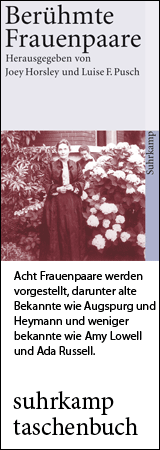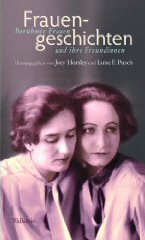
Born 8 September 1896 in Chybi near Krakow
Died 3 May 2000 in Bolzano, South Tyrol, Italy
South Tyrolean artist (enamellist)
Biography
As a child of the Danube Monarchy (Austro-Hungarian Empire) May was relocated early – after the early death of her father in 1909 – to Pola on the Adriatic Sea and the largest city in Istria (now Pula, Croatia), where her mother’s brothers, both naval officers, were stationed. Here she experienced the elegance of the Empire in its last years, an experience which would influence her for the rest of her life.
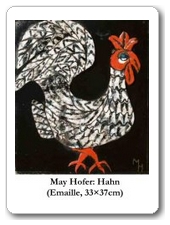
Filled with the artistic desire to create something herself, May moved to Vienna during the first World War, where she attended courses at the Academy for Applied Art for three years. She selected the courses of Rosalie Rothansl in textiles and Eduard Wimmer-Wisgrill in fashion drawing. She also met the man who would become her husband, the painter and architect Anton Hofer, a respected artist at the Academy. After they married he decided to return to his home in Bolzano, since that seemed safer to him after the war. May followed with a heavy heart; she would have preferred to remain in a large city. And the provincial narrowness and the traditional understanding of art prevalent in South Tyrol remained oppressive to her throughout the rest of her life.
Together with the Valier family the Hofers operated a hotel in Miramare near Rimini for a number of years, a structure which Anton Hofer had designed. Following their return to Bolzano May occupied the bright studio of Sophie and Emmanuel Fohn on Leonardo da Vinci Street, where the brothers Stolz were already working.
Always ready to try something new, May Hofer returned to Vienna and the Academy of Applied Art as an auditor after World War II. She attended classes in enamel work under Professor Nedbal and learned the technique of Russian net-enamelling from his wife Marika Nedbal-Dolnizka, who was from Ukraine.
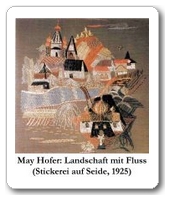
During this time she experienced reawakened childhood memories, the gnawing longing for the far East and for an impossible love who had disappeared forever in the snowy expanse of Russia. It inspired her to create mosaics of fabric, the Limoges- and Cloisonné-textures. These works recall the painted fairy tales of Marc Chagall, the myths of ancient religions and Byzantine icons sparkling with gold and lacquer.
From 1964 on the artist participated in numerous exhibitions in Italy and abroad. Her fabric mosaic panels were particularly admired: “Dorf meiner Heimat” (Village of My Homeland, 1950), which recalls her birthplace; “Hahn kündigt den Morgen an” (Cock Announcing the Morning, 1961); and “Versunkene Stadt” (Sunken City, 1968), which was acquired by the Bolzano Savings Bank (Bozner Sparkasse). The Vienna Museum of Applied Art purchased her “Schöpfungszyklus” (Creation Cycle), a textile mosaic in three sections of 65 x 65 cm (1969).
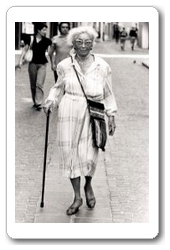
On July 8, 1988, May Hofer was awarded the “Ehrenkreuz” (Medal of Honor) of the Republic of Austria for her contributions in the realm of knowledge and art.
In her last years she produced several works in enamel: tabernacles for the Jesuheim in Girlan and for the home for the aged in Kastelruth, for which she also created a pietà; in addition, the enamel picture “Der gute Hirte” (The Good Shepherd) for the Völser Schwesternheim (sisters’ home in Völs). Her late tapestries “Der Turm von Babel” (The Tower of Babel, 1995), “Der Fund der Dame von Elche” (Discovery of the Lady of Elx, 1990) und „Die Königin von Saba“ (The Queen of Sheba, 1990) are also greatly admired.
May Hofer died in Bolzano on May 3, 2000 at the age of 103.
(trans. Joey Horsley)
For more information see the German version!
Author: Sylvia Hofer
If you hold the rights to one or more of the images on this page and object to its/their appearance here, please contact Fembio.




